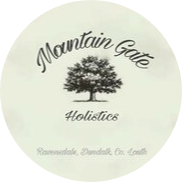At Mountain Gate Holistics Clare offers a range of different classes. Having trained in Ashtanga Vinyasa, Tantric hatha and Yin Yoga the classes are catered to suit mixed abilities with an emphasis on bodily awareness and working to your own limits in any given moment.
The classes are done in 6 week blocks with an investment of €50 for the 6 weeks. This allows classes to build and flow better building the group as a whole.
As spaces become available for the class blocks it will be posted on the Mountain Gate Holistics Facebook or Instagram pages. If you do not use social media contact Clare directly on 0868612283 to express your interest in joining a class and you will be put on the waiting list for the next set.
As always, if you have any questions or concerns don’t hesitate to contact via email (info@mountaingate.ie or WhatsApp message (0868612283).
Here is a little description of some of the types of yoga offered here.
Tantric Hatha Yoga
The word TANTRA (tantric is an adjective which describes something coming from tantra) is made up of two words: TANOTI and TRAYATI. Tanoti means “to expand, to stretch, to extend”, while the word trayati means “to liberate or free”. Therefore Tantra (tan+tra) means to expand one’s experience and awareness of everything, to extend the frontiers of apprehension beyond the material, and hence to attain spiritual knowledge and liberation.
The series taught is the Tri Dosha Balancing series. Tri Dosha refers to the three doshas or gunas from Ayurveda. The three doshas—Vata, Pitta, and Kapha—are derived from the five elements. Also known as mind-body types, the doshas express unique blends of physical, emotional, and mental characteristics. In Ayurveda, health is defined as the dynamic state of balance between mind, body, and environment. The regular practice of Tri Dosha balancing series aims to create balance and harmony between the body and mind and cultivate relaxation in everything that you do, both on and off the yoga mat.
It is a deeply meditative form of yoga that brings your focus and attention inwards and activates the energy centers in your body.
This type of yoga is deeply meditative and teaches the body that maximum results can be achieved when we completely relax our body and realise how much tension we hold unnecessarily without any benefit. For example squinting your eyes or perhaps clenching your jaw in order to see something better, using muscles to do the work of the nerves. These are processes that we are all guilty of doing and through the practice of this Tri Dosha Balancing series we aim to recognise these unnecessary actions become aware of them and then to just relax.
Vinyasa Yoga
The primary function of Vinyasa Flow Yoga is to link the body and the breath, allowing the breath to guide you from one posture to the next.
Vinyasa yoga stills and trains the mind because it has so many focal points that train the mind: the breath, movements, bandhas (energetic locks in the body), postures, and sequences, giving it the ability to process what the practice brings up to the surface —both joyful and uncomfortable.
“Vinyasa” is derived from the Sanskrit term nyasa, which means “to place,” and the prefix vi, “in a special way” the steps along a path to the top of a mountain, or the linking of one posture to the next. In the yoga world the most common understanding of vinyasa is as a flowing sequence of specific asanas or postures coordinated with the movements of the breath. it is mostly associated with Ashtanga Yoga.
In Ashtanga Yoga the Vinyasa is used to retain heat, reset the body between sides and create strength. So in this was Vinyasa Flow yoga is can be a faster paced dynamic form of yoga aiming to get into all the areas of the body we tend to forget about in our more daily lives and to use the breath the nourish them.
